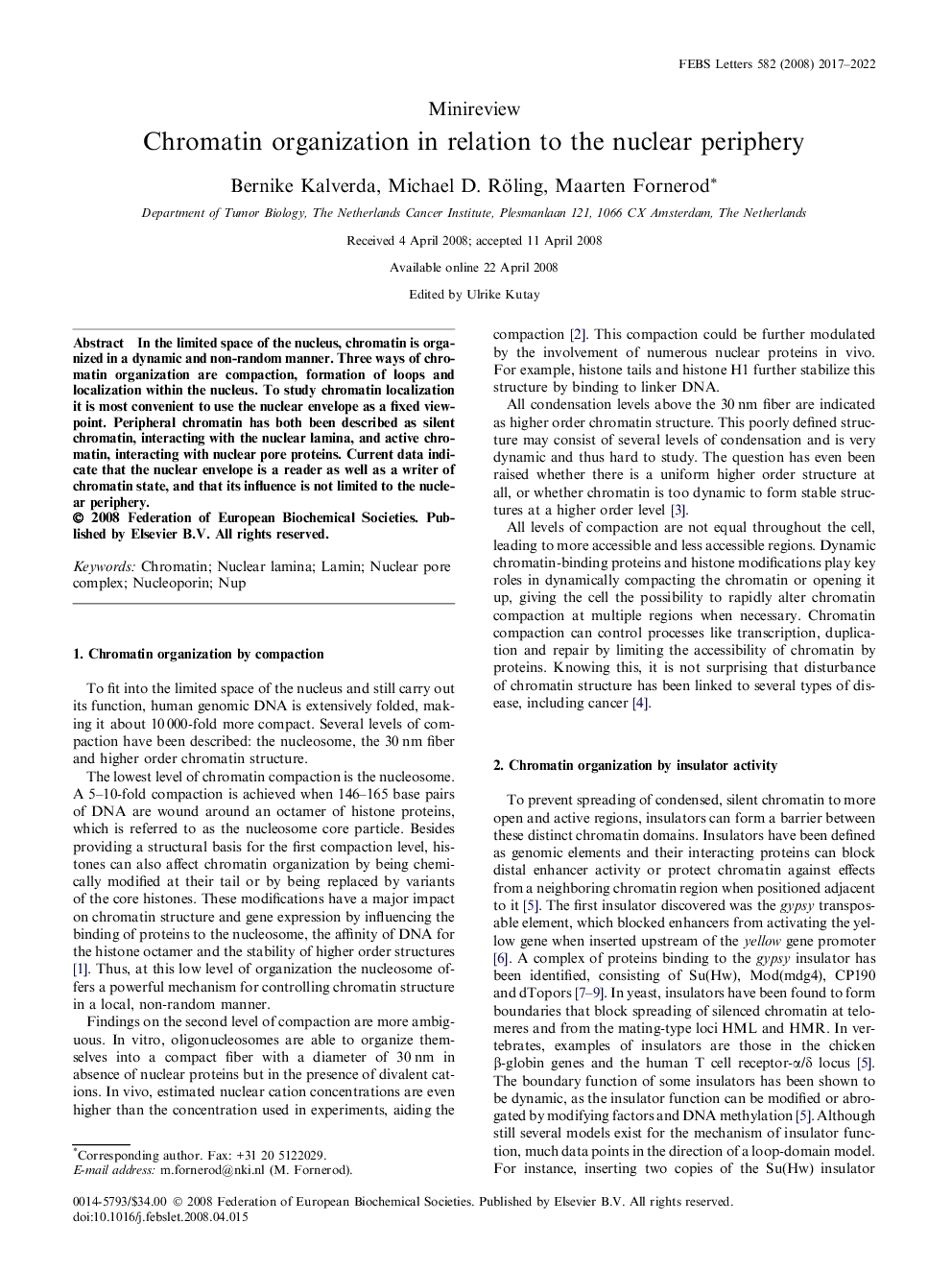| Article ID | Journal | Published Year | Pages | File Type |
|---|---|---|---|---|
| 2050336 | FEBS Letters | 2017 | 6 Pages |
Abstract
In the limited space of the nucleus, chromatin is organized in a dynamic and non-random manner. Three ways of chromatin organization are compaction, formation of loops and localization within the nucleus. To study chromatin localization it is most convenient to use the nuclear envelope as a fixed viewpoint. Peripheral chromatin has both been described as silent chromatin, interacting with the nuclear lamina, and active chromatin, interacting with nuclear pore proteins. Current data indicate that the nuclear envelope is a reader as well as a writer of chromatin state, and that its influence is not limited to the nuclear periphery.
Related Topics
Life Sciences
Agricultural and Biological Sciences
Plant Science
Authors
Bernike Kalverda, Michael D. Röling, Maarten Fornerod,
